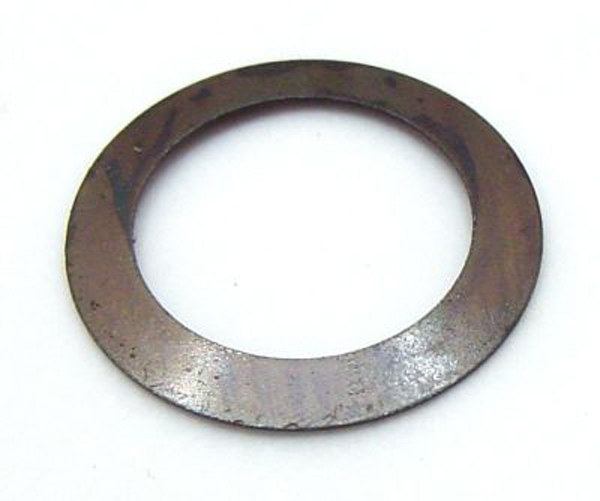BE WARNED: There are some
MAJOR spoilers in this article, so, if like Seinfeld’s Frank Costanza, you “like to go in fresh!†then you should stop reading here and go read something else.

Go on. We’re all waiting.
Thank you.
Now, as the three-nippled fortune-teller in Mallrats once quipped, “you guys still in? Goodâ€
You don’t need a working TARDIS in order to be up on
Doctor Who Series 9, it seems. This month, Doctor Who showrunner Steven Moffat gave an exclusive (and very revealing) interview to SFX magazine, whereby he gave non-spoiler-phobes a pretty detailed run-down of each and every upcoming episode â€" and it looks like we fans have got a pretty fun twelve weeks ahead of us!
So, here goes...
Episodes 1 & 2 “This is the opening two-parter. It features lots of Daleks and this time we mean it! Clara receives a mysterious summons and has to team up with Missy to search for the Doctor in a very, very old place.†There have been a lot of rumors going around about this two-part story. Some have speculated that it is going to be a spiritual sequel to the 1975 classic Genesis of the Daleks starring Tom Baker, with The Doctor visiting Davros childhood. Some of these claims have been refuted since then, but at least we know that the part about Daleks is true.
PS: Don’t be surprised if we see The Karn Sisterhood in this story.
Episodes 3 & 4 “This two-parter is written by Toby Whithouse and features an underwater base plagued by creeping ghosts and an island that is about to be submerged in water. But who or what is doing this and how can the Doctor stop it? It’s very scary, atmospheric and claustrophobic, much like some classic episodes.†This sounds like a love letter of sorts to the popular base under siege concept that was regularly used during the cash-strapped Patrick Troughton era of the show (1966 â€" 1969). The idea gave us some wonderful stories/monsters and often yielded strong, memorable performances from the actors involved, here’s hoping for more of the same.
Episodes 5 & 6 “Those two are exceptional! Doctor Who meets Game of Thrones! Well, only because Maisie Williams is in them. The first part features Vikings fighting mercenary robots (and a dragon!) and the second one sees a group of Highwaymen dealing with a Norse godâ€. This wouldn’t be the first time that Doctor Who cashed in on the popularity of a big-selling American TV show or movie. With both Vikings and Game of Thrones experiencing huge levels of fan-devotion right now, it seems to make sense. The leaked on-set photos from this two-parter were visually stunning, so they should make for an interesting couple of nights in front of the telly at least!
Episodes 7 & 8 “This one is written by Peter Harness and Day of the Doctor acted as a prologue to it. In it, the Zygons made peace with the Humans, but not every Zygon decided it was okay so theyve been raising an army, silently and now they’re rising against UNIT! We’ve been planning this forever and Osgood is in it! But how is that possible you’d ask? Missy killed her! Who knows? Well, we know.†Zygons! Zygons! Zygons! Ever since Tom Baker’s shape-shifting adversaries decided to let Zygons be Zygons in the 50
th anniversary special, I’ve been anxiously awaiting their return. Lets face it; we all knew they’d be back. Zygons Vs. UNIT? Bring it ooooon!
Episode 9 “This is a very unique Doctor Who story from Mark Gatiss. It wasn’t possible to do such an episode ten years ago, when the show came back and Mark has been rewriting it over and over again to make it perfect. It’s a beautiful story, very eerie and special, I think it’s going to be an instant classic.†Mark Gatiss is the only writer other than Steven Moffat to have written for every incarnation of The Doctor in the revived series. However, Series 8’s Robot of Sherwood was undoubtedly the season’s lowest point, so let’s hope he does a little bit better this time around.
Episode 10 “An episode which leapt out as “why haven’t we done this already? This is so Doctor Who we should be doing this immediatelyâ€. And when Sarah Dollard walked in with the finalised script, it was even better! Really, this is going to be a fan-favorite, everyone will want to re-watch it.†Ooooh, cryptic! No idea about this one. Dollard has written for the popular BBC shows Being Human and Primeval, but she also wrote for Merlin (which personally, I hated) and, um, Neighbors. I guess we’ll all just have to watch it and see!
Episode 11 & 12 (Finale) “A challenge. I won’t say anything else because it would be too spoilery, but when you’ll watch it, you’re going to ask how exactly the Doctor and Clara are going to pull it off.† Moffat has struggled with ambitious concepts before, often leaving story strands frustratingly loose and occasionally overlooking some mammoth plot-holes in the process (Asylum of the Daleks, anyone?). However, he is maybe the top sci-fi screenwriter in the world right now - and when he’s on top form, nobody can touch him.
The finale of Series 8 was a big, bold concept, which, while it may have been a little unwieldy for its own good, certainly provided more than enough bang for your entertainment buck. Will Series 9’s climax offer as much? We’ll have to wait and see.
Overall, this series sounds absolutely cracking. Moffat comes off in these soundbytes as energized, excited and optimistic (always a good sign) and Peter Capaldi has proved to be an excellent Doctor so far, so my hopes for Series 9 are certainly high.
In addition, a return to the cliffhanger endings that were such a big part of the series’ classic run should have the effect of allowing the writers a chance to better pace their stories (thus eliminating some of the anti-climactic endings that plagued Series 7), as well as encouraging stronger viewing figures throughout the run of the series (as opposed to just the opener and finale episodes).
Furthermore, the apparent increase in two-part stories should hopefully serve to weed out some of the lesser story concepts and overly gimmicky premises that might otherwise make it to production (Dinosaurs on a Spaceship, to cite just one example), placing a stronger emphasis on the best concepts and allowing the cream of the ideas to rise to the top, as it were.
The beauty of Doctor Who, of course, is that whilst other shows in their ninth year might be struggling with cast and crew leaving, ageing and possibly even dying, Doctor Who simply doesn’t have that problem. Like the titular Time Lord himself, the show can always regenerate, staying perpetually fresh, new and exciting and thus pleasing its audience, again and again.








